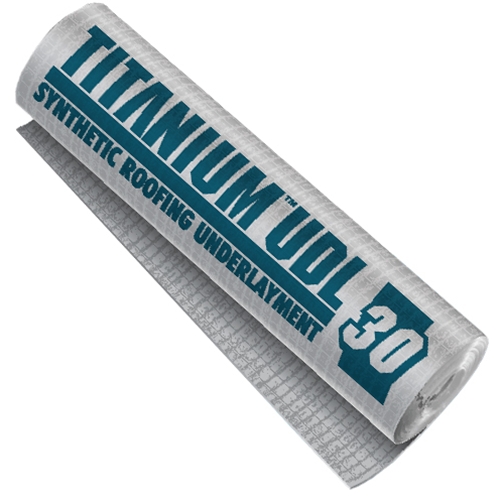 Asphalt-saturated felt has been the standard for underlayment all across the United States; however, there is currently a new product that is challenging this norm called synthetic underlayment. It comes highly recommended by many experts due to the benefits it has to offer!
Asphalt-saturated felt has been the standard for underlayment all across the United States; however, there is currently a new product that is challenging this norm called synthetic underlayment. It comes highly recommended by many experts due to the benefits it has to offer!
Does it really offer something new or is this all just publicity? Before getting on the bandwagon, take a look at what this material is and how well it fares compared to a more standard product.
Function
An underlayment is a crucial component that is used in various roofing systems ranging from shingles, built-up and green roofs to metal ones. Its primary purpose is to provide secondary protection in case water leaks past the primary covering, especially when using shingles. Water can seep through gaps between the shingles and without this product, the water can soak the decking, damaging insulation and other underlying components.
In a built-up roof, underlayment acts as a fiber reinforcement to improve the structural integrity of the asphalt. Several layers are often used with asphalt applied in between until the desired thickness is achieved. Aside from fiber reinforcement, it also serves as a waterproofing membrane since asphalt can develop cracks over an extended period of time.
With green and metal roofs, its primary purpose is for moisture protection. These systems are prone to attract moisture and this covering prevents the absorption of any moisture into the decking. It also serves as a secondary protection in case a leak does occur.
Advantages
While both synthetic and asphalt underlayment perform a common function, each composition is very different. Conventional asphalt felt basically uses asphalt-saturated organic fibers which serves as a substrate to prevent the material from tearing. The downside of the asphalt-based product is that it will eventually absorb water. When asphalt is subjected to constant heat exposure, it loses its flexibility and becomes prone to wrinkling and tearing, causing the underlying components to be susceptible to water exposure.
On the other hand, synthetic underlayment is made from polypropylene, polyethylene, polyester and fiberglass. These materials provide more superior waterproofing protection than the conventional material and are resistant to damage caused by ultraviolet rays as well being subject to tearing. Overall weight is considerably less, making it much easier to handle and install. Other features are offered such as self-adhering and non-skid versions.
Beneficial Uses
The synthetic variety is better than #30 asphalt felt in terms of performance and strength. Such benefits are evident on the southern coast of the United States where many homes have badly damaged roofs due to the very real risk of hurricanes. Synthetic underlayment was developed for such homes as a temporary means to cover them while waiting for professional help. The material proved to be very reliable in providing waterproofing and became used by contractors as a proper roof underlayment.
For the most part, synthetic underlayment has a clear advantage over conventional asphalt felt and may eventually replace it. This material excels in durability and functionality and with its long service life, it may prove more cost-effective in the long term. Hopefully this article has provided some helpful information regarding this artificial material – its function, as well as its advantages. Wrap up your roofing problems in synthetic underlayment today!
Schulte Roofing Can Help With Your Houston Roof Needs!
Do you need a Houston Roof contractor to answer questions about underlayment material? Schulte Roofing at 800-367-7663 can help all greater Houston area customers with this and many other roofing concerns!
